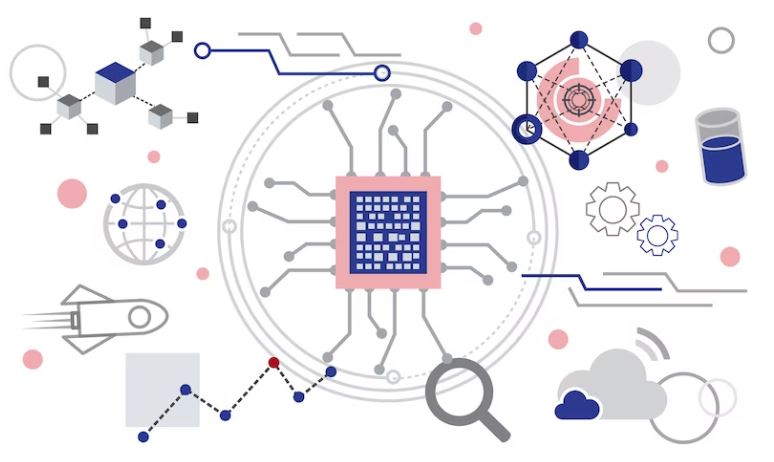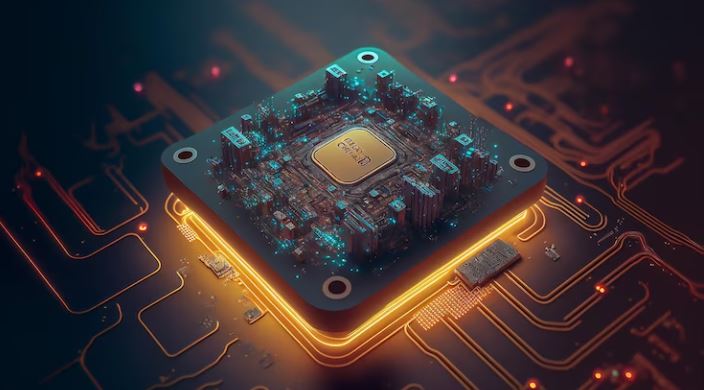What is Technology Blog?
A technology micro niche refers to a specialized and focused area within the larger technology industry. It is a specific segment or subcategory that targets a particular audience, addresses specific needs, or offers unique products or services within the technology field.
A tech niche is a specialized area within the technology industry that focuses on a specific aspect or subcategory. For example, in web development, there are different niches like front-end development, back-end development, or specific programming languages like CSS, HTML, PHP, JavaScript, and Python. These niches allow professionals to specialize and focus on specific areas of expertise within the broader tech field.

For example, within the broader field of mobile app development, a tech niche could be developing apps specifically for the healthcare industry or creating educational apps for children. These niches allow businesses to specialize and tailor their offerings to the unique requirements and preferences of their target audience.
What is Technology Blog?
A technology micro niche blog is a website that focuses on a specific area within the technology industry. It regularly publishes blog posts that provide information, reviews, comparisons, and tutorials on topics related to that specific area. These blog posts often include pictures and screenshots to make them easier to understand. Tech blogs aim to help readers stay informed and learn more about technology in a detailed and user-friendly way.
Tech Niche Ideas:
- Artificial Intelligence (AI)
- Machine Learning
- Data Science
- Internet of Things (IoT)
- Robotics
- Virtual Reality (VR)
- Augmented Reality (AR)
- Cybersecurity
- Blockchain Technology
- Cloud Computing
- Big Data Analytics
- Mobile App Development
- Web Development
- E-commerce
- Social Media Marketing
- Digital Advertising
- UI/UX Design
- Software Development
- Computer Vision
- Natural Language Processing (NLP)
- Quantum Computing
- Cryptocurrencies
- Biotechnology
- Genetic Engineering
- 3D Printing
- Autonomous Vehicles
- Renewable Energy
- Green Technology
- Nanotechnology
- Wearable Technology
- Health Tech
- Telecommunications
- Space Exploration
- Drones and UAVs
- Gaming Technology
- Fintech (Financial Technology)
- EdTech (Education Technology)
- HR Tech (Human Resources Technology)
- AgriTech (Agriculture Technology)
- CleanTech (Clean Technology)
- Logistics and Supply Chain Technology
- Smart Home Technology
- Industrial Automation
- Advanced Manufacturing
- Internet Security
- Data Privacy
- Computer Networks
- Human-Computer Interaction
- Internet Services and Providers
- Cloud Storage Solutions
- Voice Recognition Technology
- Quantum Cryptography
- Bioinformatics
- Virtual Assistants
- Computer Graphics and Animation
- Wireless Technologies
- IoT in Healthcare
- Autonomous Robots
- E-learning Platforms
- CRM Systems (Customer Relationship Management)
- ERP Systems (Enterprise Resource Planning)
- Data Warehousing
- DevOps (Development and Operations)
- E-Commerce Platforms
- Chatbots and Conversational AI
- Predictive Analytics
- Mobile Payments
- IoT in Agriculture
- Smart City Solutions
- Data Visualization
- Cloud Infrastructure
- Wearable Health Devices
- IoT in Manufacturing
- Biometric Technology
- Cybersecurity Consulting
- Data Governance
- Robotic Process Automation (RPA)
- Virtual Reality Training Simulations
- Data Mining
- Digital Transformation
- IoT in Retail
- Mobile Gaming
- E-wallets
- Smart Grid Technology
- Energy Efficiency Solutions
- Computer Forensics
- Geographical Information Systems (GIS)
- Data Center Management
- Internet Service Providers
- Customer Experience Management
- Predictive Maintenance
- Voice over IP (VoIP)
- IoT in Transportation and Logistics
- Biometric Authentication
- Cloud Backup Solutions
- Natural Language Generation (NLG)
- Robotics Process Automation (RPA)
- Supply Chain Management Software
- Content Management Systems (CMS)
- Data Integration Solutions
- Edge Computing
- IoT in Energy Management
- Digital Twin Technology
- Smart Agriculture Solutions
- Robotics in Healthcare
- IoT in Smart Buildings
- Blockchain in Supply Chain
Zone of Specialization in Technology Blogging:
a) Software and App Reviews
Tech bloggers specialize in reviewing various software applications, mobile apps, and digital tools. They assess their features, performance, usability, and provide insights for readers to make informed decisions.

b) Tech News and Updates
Bloggers in this specialization focus on delivering up-to-date news, trends, and industry insights. They cover new product launches, mergers and acquisitions, emerging technologies, and significant developments in the tech world.
c) Programming and Coding
Specializing in programming and coding, tech bloggers provide tutorials, code snippets, best practices, and insights into different programming languages, frameworks, and development practices.
- Write about Programming Language
- Coding Challenges and Competitive Programming
- Software Engineering and Best Practices
- DevOps and Infrastructure Blogs
Types of Tech Micro Niche Blogs
Reviews and Analysis Blogs:
These micro technology blogs specialize in providing comprehensive reviews and analysis of various tech products, gadgets, software, and services. They assess the features, performance, usability, and value for money of different tech offerings. Reviews and analysis blogs help readers make informed decisions about purchasing or adopting specific tech products or services.
How-to and Tutorial Blogs:
These micro niche blogs focus on providing step-by-step guides, tutorials, and educational content to help readers learn and master specific tech skills or solve common tech-related problems. They often include detailed explanations, visuals, and practical examples to make complex concepts or tasks easier to understand. How-to and tutorial blogs aim to empower readers with the knowledge and skills needed to navigate the tech world effectively.
News and Updates Blogs:
These micro niche blogs focus on delivering the latest news, trends, and updates in the technology industry. They cover topics like new product launches, industry developments, mergers and acquisitions, and emerging technologies. News and updates blogs aim to keep readers informed and up to date with the rapidly evolving tech landscape.
Writing in the Technology Niche
Writing in the technology micro niche requires a combination of technical knowledge, clear communication, and the ability to make complex concepts accessible to a wide range of readers. Here are some tips for writing effectively in the technology niche:
- Understand Your Audience: Identify your target audience within the tech niche and understand their level of technical expertise. Adapt your writing style and level of technicality accordingly to ensure your content resonates with your readers.
- Research Thoroughly: Stay up to date with the latest technology trends, advancements, and industry news. Conduct thorough research to ensure the accuracy and credibility of your content. Use reputable sources and cite them appropriately.
- Use Clear and Concise Language: Write in a clear and concise manner, avoiding jargon or technical terms that may be unfamiliar to your audience. Break down complex concepts into easily understandable language, providing relevant examples and analogies to aid comprehension.
- Structure Your Content: Organize your content in a logical manner, using headings, subheadings, and bullet points to make it scannable and easily navigable. Provide a clear introduction, body, and conclusion to guide readers through your content effectively.
- Use Visuals: Incorporate visuals such as diagrams, charts, screenshots, or infographics to enhance understanding and engage readers visually. Visuals can help simplify complex ideas and make your content more appealing and accessible.
- Provide Practical Examples: Use real-life examples and case studies to demonstrate the application of technology concepts or solutions. This helps readers understand how technology can be implemented and its impact in different scenarios.
- Stay Engaging: Write in a conversational tone to engage readers and make your content more enjoyable to read. Incorporate storytelling techniques, anecdotes, or personal experiences to make your content relatable and interesting.
- Edit and Proofread: Thoroughly edit and proofread your content to ensure clarity, coherence, and correctness. Check for grammatical errors, spelling mistakes, and factual inaccuracies before publishing your work.
- Stay Updated: Technology is a rapidly evolving field, so stay updated with the latest trends, advancements, and best practices. Continuously refine your knowledge and skills to provide valuable and relevant content to your readers.
Remember to write with the intention of providing value and helping your readers understand and navigate the world of technology effectively. By combining your expertise with effective communication, you can create engaging and informative content in the technology niche.
How to Monetize Technology Blog
Monetizing a technology micro niche blog can be achieved through various methods. Here are some common strategies to generate revenue from your technology blog:
a) Display Advertising:
Incorporate display advertisements on your blog using advertising networks like Google AdSense or media.net. You earn revenue when visitors click on or view these ads.

b) Affiliate Marketing:
Join affiliate programs related to technology products or services. Promote affiliate links or banners on your blog, and earn a commission for each sale or action generated through your referral.
c) Sponsored Content:
Collaborate with technology companies or brands to create sponsored posts, reviews, or tutorials. In exchange for compensation, feature their products, services, or promotions on your blog.
d) Product Reviews and Recommendations:
Offer paid product reviews or recommendations to companies seeking exposure for their tech products. Provide honest and unbiased reviews to maintain your readers’ trust.
e) Digital Products:
Create and sell digital products tailored to your niche audience. Examples include e-books, online courses, premium content, or software tools related to technology.
f) Consulting or Freelancing:
Leverage your expertise by offering consulting services or freelance work in your technology niche. This can include website development, software customization, tech support, or digital marketing services.
g) Sponsored Events or Webinars:
Organize sponsored events, webinars, or workshops in collaboration with technology companies or industry experts. Charge attendees a fee to participate or offer premium access for additional benefits.
h) Membership or Subscription Model:
Provide exclusive content or access to a premium membership or subscription area of your blog. Offer additional resources, tutorials, or personalized support for a recurring fee.
I) Ad Space Direct Sales:
Sell ad space directly to technology companies or brands interested in advertising on your blog. This approach allows you to negotiate custom advertising deals and pricing.







